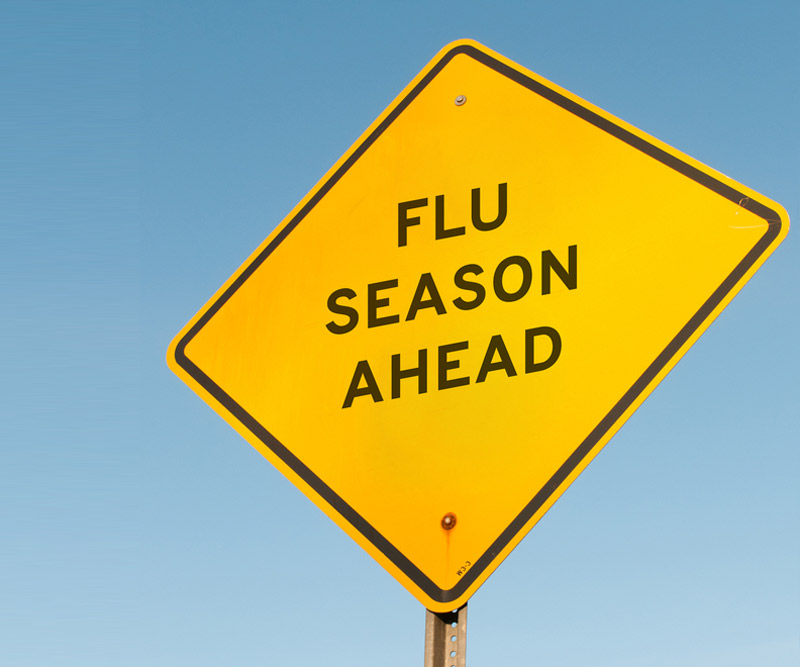
It starts with a tickle in your throat, then a sniffle here and there. Before you know it, you’re holed up in bed with a full-fledged case of the flu.
Flu season in the United States begins in October and can last as late as May, with peak flu activity between December and February.
In Hawaii, flu can be active in any month of the year.
The best way to avoid getting sick this year? Be in the know on influenza with these six fast flu facts.
Do You Know … What Causes the Flu?
The flu is a highly contagious disease caused by the influenza virus.
The virus enters your body through your nose, eyes or mouth. The most common way people contract the flu is by touching their hands to their mouth or nose after coming into contact with a person or everyday item – think doorknobs, elevator buttons, keyboards, pens at a checkout – that has been contaminated.
You also can get sick from breathing in the virus, or by kissing someone who has the flu.

You can spread the flu to someone else up to seven days after your first symptoms start. However, the virus can live in your respiratory tract up to 24 hours before you begin to feel sick, meaning you can pass on the flu to someone else one day before you realize you’re carrying the virus.
Do You Know … There are Different Types of Flu?
There are three types of the flu virus:
- Type A.
- Type B.
- Type C.
Types A and B are responsible for the aches, chills, fevers, coughing and sniffling most people experience during the annual flu season. Type C also can cause these symptoms, but they’ll usually be much less severe.
Influenza virus types A and B can be broken down into different strains, such as influenza A H1N1 (swine flu) and influenza A H5N1 (bird flu).
The annual flu vaccine is created before each flu season and contains strains that experts believe will be most common during the upcoming season.
Traditional flu vaccines are called “trivalent” vaccines and are made to protect against three flu viruses – two types of influenza A and an influenza B virus.
There also are flu vaccines made to protect against four flu viruses. Called “quadrivalent” vaccines, these immunizations protect against the same viruses as the trivalent vaccine and an additional B virus.
Was that sneeze the flu or cold coming? Here's how to spot the difference.
You've gotten the flu shot and taken other precautionary steps to avoid getting the flu, but what happens if you still get sick?
Published on: October 2, 2017




